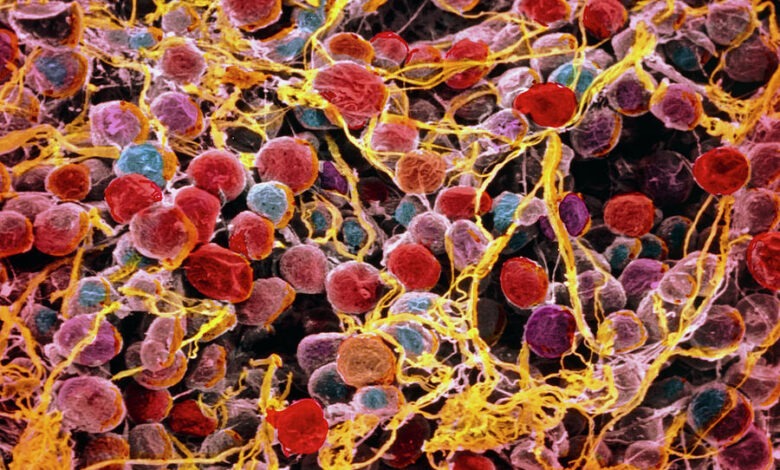
Adipose tissue, otherwise known as body fat, is a connective tissue that extends throughout your body. It is mainly found under your skin (subcutaneous fat), between your internal organs (visceral fat), and in the inner cavities of bones (bone marrow adipose tissue). Adipose tissue is primarily known for storing and releasing energy and providing insulation.
Fat cells, or in scientific terms adipocytes or lipocytes, are the main constituents of adipose tissue, and come in three colors, white, brown, and beige. The white fat cells store fat in our body as an energy reserve, provide insulation from extreme temperatures and build cushioning around soft organs. We need these cells, but having too many creates health problems.
Brown fat cells are particularly active in infants. They produce heat and thus maintain the baby’s body temperature. However, the amount of brown adipose tissue decreases over a person’s lifetime, with adults having very little of it. Beige fat cells can also produce heat, albeit somewhat less well than brown fat cells. Beige fat cells occur in adults as well, lying scattered throughout the white fatty tissue, especially in the neck and shoulder area, they help in using up excess energy.
Now an international research team, hailing from universities and institutes in Switzerland, Germany and the United States, as well as scientific centers around the world, has discovered and described a new type of beige fat cells, which differ from the ones that were already known. The new fat cells play an important role in energy metabolism in the human body and have a positive effect on metabolic diseases and obesity.
The beige fat cells that researchers were already familiar with generate heat in the same way as brown fat cells: via a protein called UCP1. This protein is located in the inner of two membranes that surround the mitochondria, the ‘powerhouse’ of the cell. As part of their normal function, mitochondria pump protons into the space between the two membranes. Protons are electrically charged elementary particles that generally play an important role in energy conversion processes in cells.
Brown fat cells and the classic beige fat cells described earlier have the protein UCP1, which forms a very narrow channel in the inner membrane through which the protons flow back into the mitochondria, thereby generating heat from friction. The beige fat cells found in the new study were found to be without the UCP1 protein, but these cells also consumed energy and produced heat.
The researchers explained that all biochemical processes that take place in cells always generate some heat. The new class of beige fat cells takes advantage of this and allows individual processes to run back and forth, seemingly without purpose. This primarily involves two conversion processes. In the first process, the cells break fats down into their components (fatty acids) at full speed and then assemble them into new fats just as quickly.
In the second process, these cells apply an enzyme to convert molecules of creatine into creatinine phosphate, a related molecule, only to immediately convert it back into creatine. Scientists call these back-and-forth processes ‘futile cycles’, as they do not add anything to the biochemical budget overall, but they consume energy and generate heat.
While less than half the population has the previously known type of classical beige fat cells, almost all humans have the new futile-cycle type, albeit in differing amounts. People with a high number of beige fat cells — of either the previously known type or this new type — are slimmer and tend to have better metabolic health. That makes them less prone to obesity and metabolic disorders such as diabetes.
The new findings could in future be used for medical purposes, such as by transplanting the beige fat cells into people who have only a few of them and suffer from metabolic diseases or weight problems. It would also be conceivable to develop drugs that activate the beige fat cells, which are often inactive. Such drugs could be used to treat people with high blood sugar levels or formerly overweight people who have reduced their weight through surgery or other means. Activating their beige fat cells could help them to maintain their lower body weight over the long term.













